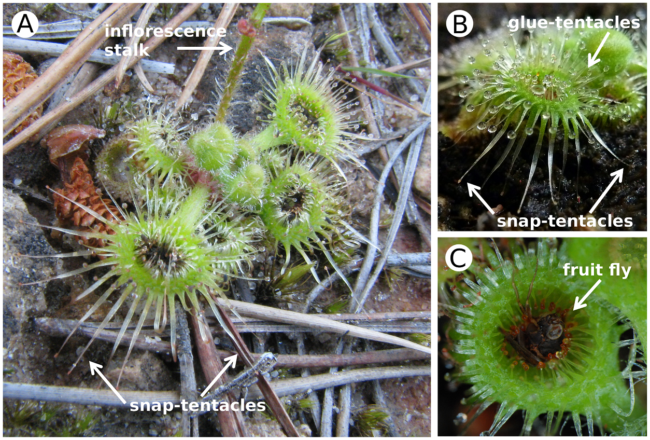A carnivorous plant of the sundew genus uses two different types of mechanisms to trap animals, new research shows 1. Scientists in Germany studied the sundew Drosera glanduligera to understand how this plant uses a catapult mechanism to throw flies into its sticky leaf centre where digestive enzymes break down insects to extract nutrients essential for the plant’s development.
Carnivourous plants grow in nutrient-poor habitats such as the bogs of the Cairngorm mountains in Scotland and they have two main types of trap mechanisms to capture their prey. Active snap-movements are used by famous plants such as the Venus-Flytrap, whereas other carnivorous plants such as sundews use sticky-tentacles with glue-like droplets to which they trap their prey as soon as they come into contact with it. Drosera glanduligera, an Australian sundew species is unique because it possesses two types of tentacles: sticky tentacles and non-sticky snap-tentacles. These snap-tentacles act to catapult prey rapidly into the leaf centre which is covered by sticky droplets. This sundew is the only one known to use a combination of these two trapping mechanisms. Its snap-tentacles bend like a hinge and catapult insects at a speed of over 160 mph, even faster than the trapping motion of Venus-Flytrap. When examined in detail using electron microscopy and high-speed motion analysis the bending mechanism appears to be caused by hydraulic forces unleashed within the tentacle. This combination of both types of trap-mechanism is unique in Carnivorous plant and demonstrates the complexity of this fascinating feeding habit.
An online video showing fascinating macroscopic images of fly-trapping by Drosera glanduligera has also been made available.

